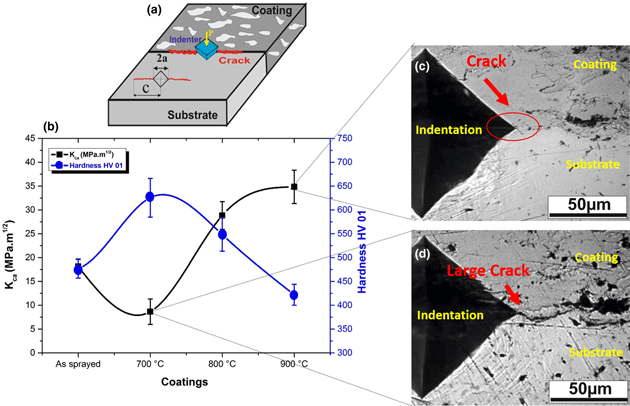Article contents
Effect of annealing temperature on the microstructure evolution, mechanical and wear behavior of NiCr–WC–Co HVOF-sprayed coatings
Published online by Cambridge University Press: 26 August 2020
Abstract

In the present work, the effect of annealing temperature on the microstructure, mechanical and tribological properties of NiCr–WC–Co coatings produced by the high-velocity oxy-fuel (HVOF) technique has been investigated. X-ray diffraction and scanning electron microscopy revealed the dissolution of WC into the NiCr matrix to form W2C and Cr3C2 with the annealing process. This dissolution became complete at 800 °C. The mechanical properties of the coatings were investigated using nano-indentation and Vickers fracture toughness measurements. These measurements suggested that the hardness, Young's modulus, and fracture toughness values increased because of the newly formed carbide phases as a result of the dissolution of the WC particles. The overall properties of the coatings were found to be optimum for annealing temperatures of 800 °C. The wear mechanism appears to be abrasive in the as-sprayed coating, and it becomes a combination of an abrasive and oxidative wear with increasing the annealing temperature.
- Type
- Article
- Information
- Copyright
- Copyright © Materials Research Society 2020
References
- 9
- Cited by





